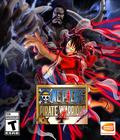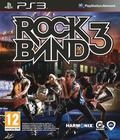Our Rock Band 3 demo began in a small theater with seven Harmonix staff playing the game. The first four are the same as before, but two additional vocalists and the keyboard player made for a wide stage and an epic feel. The Harmonix rep called Rock Band 3 "four full new games in one," and they also immediately noted that, with some limitations, all old gear would still work.
Rock Band 3 will feature 83 songs, 22 of which were in the demo build, including the likes of Ozzy Osbourne and Queen ("Bohemian Rhapsody," of course). They also pointed out that the list of playable songs exceeded 1,500 tunes on the Xbox 360 — including the Rock Band Network and imports of Rock Band 1, Rock Band 2, Green Day: Rock Band and LEGO Rock Band — and was expected to hit 2,000 by the time the game actually drops.
The biggest new feature isthe Party Play of Guitar Hero 5, with its easy drop-in, drop-out multiplayer, taken into overdrive with the new Overshell feature, which allows for almost everything related to a specific player to be handled by them without touching the main menus, conveniently disconnected everyone except the first player from the menus. Dropping in and out, turning on options like lefty flip, and switching in and out of Pro mode are fully controlled by them and them alone. The results weren't shown in detail during the demonstration, but they showed enough to have one player drop out on his bass, letting another player turn on his instrument and sign in, without the menu-surfing being interrupted. (Also not explained was how to work around the Xbox 360's four-controller limit to let the vocalist choose his difficulty and the like, as only four Overshells were present on-screen.
There's a new and much more detailed character editor in Rock Band 3, but we didn't see that either because the avatars had been pre-made. The developer showed that the menus depict your current band playing and engaging in various shenanigans. While it is a subtle difference from Rock Band 2, which depicted various pre-generated bands playing, I couldn't help but think about how this technique as a storytelling device was more suitable than the full cut scenes of Guitar Hero: Warriors of Rock.
With as many as 2,000 songs, navigation has been sorely in need of improvement, and Rock Band 3 delivers with the introduction of filters. In a quick demonstration, the developers whittled down the available Rock Band 3 songs to tunes that were short in length and met a few other requirements. One match popped up: Joan Jett's "I Love Rock and Roll." The filter sets include the "family friendly" filter from LEGO Rock Band, as well as a reverse filter that excluded family-friendly songs.
Songs can now be rated from one to five stars, and randomizers will favor songs that you've rated higher. While this is handy, it's also part of the new song recommendation system, designed to increase DLC sales by recommending relevant songs based on what the player likes, what others with similar taste liked, and other factors. The system also further influences the randomizer, trying to favor what you like over what you don't. A related function evolves set lists, so players can save, name and put an icon on the list; share it with friends; and even build their lists online on rockband.com.
Party Shuffle mode, which basically clones the Party Play modes of newer Hero games, was discussed but not shown. The new Road Challenges mode partially replaces the old campaign mode, allowing the players to create a set from two to four hours in length. It'll send them from song to song, only stopping when they ask for it, while constantly interjecting challenges. This has the side effect of the game being formally beatable, unlike the old World Tour mode, which encouraged the player to keep going after clearing all missions with a perfect star count.
However, the old campaign style has been integrated into every mode. Overshell logins set up the band, and regardless of how you are playing, you'll make some sort of progress in the game and constantly acquire money, fans and new scenes. It's unclear how well this evolution will work in practice, but if it handles well enough, it could certainly bring the casual and hardcore play styles together.
The biggest features announced for the game are the keyboards and the Pro modes. The keyboard is a full, 25-key wireless keyboard that can be plugged in as a MIDI device. (A smaller MIDI-to-USB device can connect any MIDI keyboard to the X360 to do the same thing, though you'd need to mark the colored buttons yourself.) It also has a stripe of five keys in the classic guitar color, which is used in the standard modes to play like normal Rock Band. In normal play, the keyboard can play either guitar part, and guitars can also play the keyboard part.
The full keyboard layout comes into play in Pro mode, which uses all 25 keys, showing three out of the four key groups at a time. This goes from Easy to Expert, just like the five-key mode, until at Expert, you're basically playing the real thing. (They noted how a developer repeatedly played "Bohemian Rhapsody" on Expert Pro and was able to play it almost perfectly on a real piano.)
Pro mode has also been introduced for all other instruments. With drums, the player hasto hit the color-matched cymbal or tom as appropriate. A new three-cymbal pack will be offered, though the old cymbals will work as well. Guitar and bass, on the other hand, have to use one of two new controllers, with one row of five buttons replaced with six rows of 17. This also requires a whole new layout, six strings wide, and you have to hit the correct string(s) and hold each in the correct spot. The goal of all the Pro modes is to teach the player how to do the real thing; everything except for theory and music reading is taught here, finally attaining Harmonix's long-term goal for the series.
The two new guitars are made by Mad Catz. The Fender Mustang controller simply has the strings as a grid of white buttons but is a full MIDI controller, just like the keyboard. The strings are short but provide a precise, real feel. More significantly, the Fender Stratocaster guitar has some tech magic inside to work as a controller, but it's an actual guitar. To show off how the Pro mode teaches the real thing, a Harmonix team member loaded up a song on Expert Pro and hooked up the guitar to an amp. A few seconds later, the exact same guitar sounds, minus the effects, were playing from the room's audio.
Drums now have rolls, so you need to repeatedly hit the corresponding pad or cymbal, but not on an extremely tight rhythm. On the Stratocaster, you can bend the note with your finger on the fret. Rock Band 2 will finally be exportable. Awesomeness Detection is back. Pausing the game now rolls the song back on returning to play, just like in the Hero series.
Rock Band 3 has added an array of feature improvements and a nicely varied set list to bring the game to a new level. The Pro-level guitars start at $150, and the keyboard ($80) may be a little iffy, depending on player interest, but Harmonix has once again raised the bar of the rhythm genre.
More articles about Rock Band 3











 Featuring an 83-song set list and access to far more music than ever before, as well as innovative new gameplay modes and instruments, Rock Band 3 will change the way fans think about and play music games.
Featuring an 83-song set list and access to far more music than ever before, as well as innovative new gameplay modes and instruments, Rock Band 3 will change the way fans think about and play music games.












